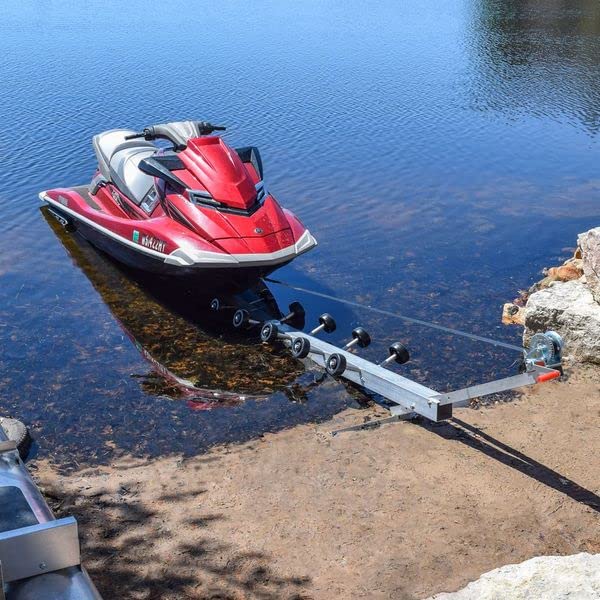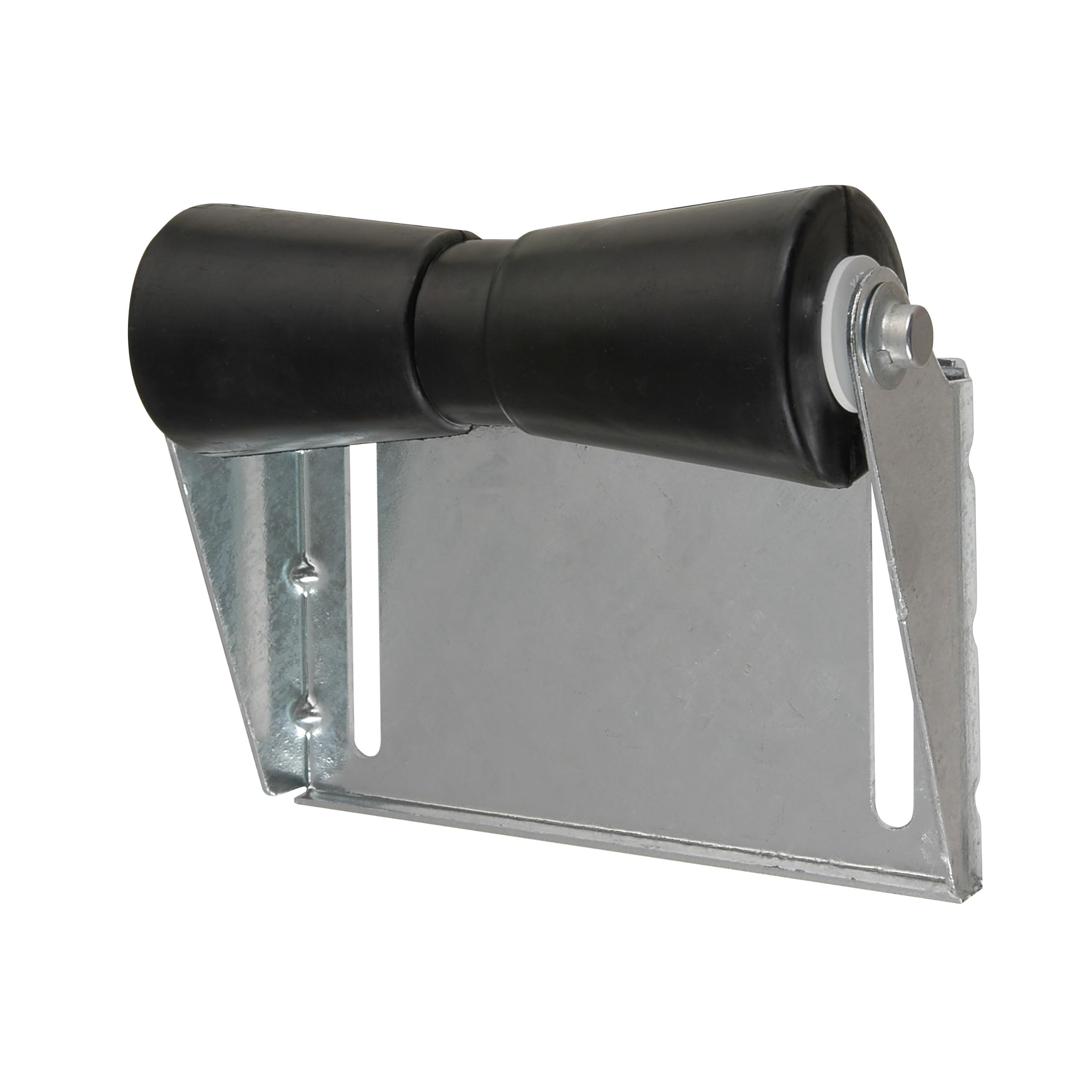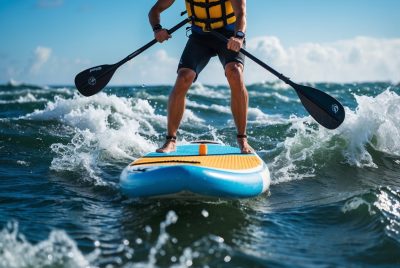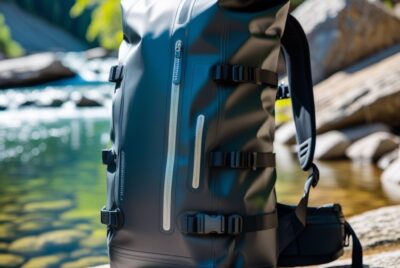Kayak Ramp Solutions: Easy Kayak Launching
*We may earn a commission for purchases made using our links. Please see our disclosure to learn more.
Kayak Ramp Solutions: Essential Guide for Easy Kayak Launching
Kayaking is an invigorating sport and a tranquil way to explore waterways, but getting a kayak into and out of the water can present a challenge. This is where a kayak ramp or launch come into play. These ramps are designed to provide a smooth transition from land to water, reducing the wear on the kayak and making it easier for individuals to launch without needing to lift the heavy vessel over rocky or muddy areas.
The construction of a kayak ramp is crucial as it needs to be durable and slip-resistant to ensure safety. It’s typically made from materials like aluminum, wood, or heavy-duty plastics to withstand the elements and the weight of kayaks. A well-designed kayak ramp will also have a gentle incline to facilitate a gradual entry into the water, helping kayakers maintain balance and control.
When considering the purchase of a kayak ramp, it’s important to note the length, width, and weight capacity. These factors will determine whether the ramp can accommodate your kayak’s dimensions and support its weight. Additionally, you should consider the ramp’s portability if you plan to use it at various locations, and its resistance to corrosion if it’s to be left outdoors or in water for extended periods.
After examining diverse kayak ramps and considering their ease of use, sturdiness, and the materials from which they’re constructed, I can guide you toward making an informed choice that enhances your kayaking experience. Let’s move to the specifics of different ramps and pinpoint the ones that stand out in facilitating a seamless launch and recovery of your kayak.
Top Kayak Ramps
I’ve carefully researched and selected the highest quality kayak ramps that cater to a variety of needs and preferences. These ramps are designed for durability, ease of use, and safety to ensure a smooth transition from land to water. Whether you’re a seasoned kayaker or just starting out, these ramps will enhance your experience and protect your kayak from damage. Now, let’s take a look at the best kayak ramps on the market.
MaxxHaul Ramp Kit
I just got my hands on the MaxxHaul Ramp Kit, and it’s a budget-friendly solution for anyone needing a durable ramp setup.
Pros
- Simple to assemble with common household tools
- Aluminum construction ensures longevity
- Non-skid surface offers excellent traction for safety
Cons
- Boards for the ramp are not included
- Capacity may not suit the heaviest loads
- Metal can be less forgiving than full ramps if not installed precisely
I recently had the chance to try out the MaxxHaul aluminum ramp top kit and I have to say, it’s quite the problem-solver. Transforming basic lumber into functional ramps, this kit is a versatile addition to my toolkit. Its aluminum build means I don’t have to worry about rust or wear any time soon. And with protective pads included, my truck’s tailgate was shielded from potential damage.
The non-skid surface was a standout feature for me. Loading my heavy generator felt secure, without any slip-ups. The ease of assembly was the cherry on top. Just a quick trip to the hardware store for some lumber, and with the provided mounting hardware, I had a pair of ramps ready to go in no time.
That said, if you’re dealing with some really heavy-duty equipment, the 700 lbs per ramp capacity might limit your use. Also, don’t forget to buy your own boards – they are essential and not part of the package. Lastly, make sure you align everything correctly during setup; the tough aluminum edges can be less forgiving than full ramps if installation goes awry.
Overall, the MaxxHaul Ramp Kit is a smart pick. It’s affordable, well-built, and after I put it to the test, I’m confident it’ll handle the average DIY enthusiast’s needs with ease.
Ruedamann Kayak Ramp
I just tried out the Ruedamann ATV Ramp, and based on its sturdy build and ease of use, I confidently recommend it for someone in need of a reliable loading solution.
Pros
- Effortless to transport and operate due to its lightweight aluminum design.
- Provides excellent traction, ensuring safety and stability.
- Versatile for various two-wheeled vehicles and equipment, enhancing its utility.
Cons
- Limited use for vehicles with a tire section wider than 7.5 inches.
- May be too short for higher pickup trucks, affecting usability.
- Only one-year warranty, which may not suffice for heavy-duty users.
After years of kayaking and multiple experiences with loading gear, I found the Ruedamann ATV Ramp especially practical for my light off-road bike needs. The folding mechanism is a breeze, making it highly convenient for storage and transport. With a folded size that’s compact and an unfolded reach suitable for most of my routine loading scenarios, its design clearly reflects an understanding of everyday users’ requirements.
The ramp’s non-slip surface caught my attention right away. Engagement with the ground felt secure, and the non-slip rubber pads added an extra layer of confidence when I used it in damp conditions—it didn’t budge. This aspect is crucial, as it directly relates to safety when handling heavy equipment.
Value extends beyond just the functionalities. Its application spans a spectrum of equipment, not limited to kayaks or bikes. When I used it for my snow blower and lawn mower, the ramp transitioned into these roles without a hitch. The one stand-out limitation is the width constraint for vehicles exceeding 7.5 inches in tire width, which wasn’t an issue for my gear but worth considering for potential buyers.
Harbor Mate PWC Dock
From firsthand experience, I can confirm the Harbor Mate PWC Dock is a solid investment for personal watercraft owners looking for a durable and reliable docking solution.
Pros
- High-strength aluminum design handles heavy loads with ease.
- Assembly is straightforward, and all fittings are secure and well-crafted.
- The winch and strap system simplifies launching and docking.
Cons
- Experienced minor hardware issues which were swiftly resolved by customer service.
- The included manual could be more detailed for setup guidance.
- The winch could be more robust given the unit’s price point.
My recent encounter with the Harbor Mate PWC Dock left a positive impression. Its high-strength, lightweight aluminum construction didn’t flinch under the weight of my jet ski, echoing its claim of a 1,000-pound capacity. Maneuvering my watercraft onto the dock felt secure, thanks to the angled rollers that also admirably prevented any scratching.
I appreciated the simplicity of putting the dock together. The stainless-steel hardware melded together perfectly, reflecting a thoughtful design. While the process was mostly intuitive, I did feel that an inclusion of more detailed instructions could have sped things up.
Upon testing the manual winch, my watercraft was hoisted smoothly, showcasing the system’s effectiveness. However, I noted that the winch mechanism could be improved to match the overall high quality of the dock. After a week’s use, this did not detract from an otherwise stellar experience with the product.
In summation, navigating the minimal hardware and instruction issues was a small trade-off for the security and convenience that the Harbor Mate PWC Dock provides. It’s a robust docking solution that’s likely to become an integral part of your water-sport routine.
CE Smith Keel Roller
I just installed this roller assembly on my trailer, and it’s clear that any boater would benefit from its durability and ease of use.
Pros
- Enhances loading ease with a solid roller that glides the boat onto the trailer.
- Built from galvanized steel, offering excellent corrosion resistance.
- Slots for adjustments guarantee a perfect fit for various boat hulls.
Cons
- Mounting may require alteration for certain trailers.
- Limited color options may not appeal to all aesthetics.
- Potential durability concerns if subjected to heavy use.
After hitting the water this weekend, I noticed right away how the CE Smith Keel Roller smoothed the boat launching process. It cradled the keel securely, and I could tell that the hot-dipped galvanized bracket was up for the task. The assembly’s pre-fitted nature spared me the frustration often accompanying a new install.
Adjusting the bracket was straightforward, thanks to the versatile mounting slots. It hugged my boat’s hull just right, and I am confident that it’ll be a lasting addition to my trailer setup. The galvanized finish also means I’m less worried about corrosion, which is a bonus given the salty sea air I’m often in.
One possible hiccup for some could be aligning the mounting holes with their existing trailer setup. It required a bit of finessing on my part, but nothing a few extra minutes and the right tools couldn’t sort out. I noticed the roller is only available in a basic beige, which might not be everyone’s cup of tea, but for me, functionality takes precedence over style. Lastly, while I can’t comment on the long-term durability yet, my first impression suggests it’s built to last, even though a few reviews mention wear and tear.
In conclusion, the CE Smith Keel Roller is a fine example of a practical and resilient accessory for trailer boating. It makes loading and unloading a less daunting task and stands up well against the harsh marine environment. Just prepare for some possible tweaking during installation and look past the lack of color choices. It’s a small price to pay for the convenience it adds to your boating experience.
SELEWARE Kayak Loader
I believe the SELEWARE Kayak Loader is a handy tool that simplifies the process of loading a kayak onto a vehicle, especially if strength or reach is limited.
Pros
- Powerful suction cups ensure a secure hold on the car window.
- Adjustable angle feature caters to different vehicle types and user preferences.
- Sturdy material offers longevity and kayak protection during loading.
Cons
- Suction reliability may vary with car surfaces and conditions.
- Some users have reported issues with the angle adjustment mechanism.
- Support structure could be improved to prevent potential damage during use.
After securing the SELEWARE Kayak Loader’s suction cups onto my car’s back window by snapping them down, I found getting my kayak on top of my Jeep to be a breeze. The absence of any sliding during the process is a testament to the effective design of the V-shaped bracket.
Adjusting the angle did take a bit of fiddling, but once I had it set, the loader held its position well, accommodating the curve of my car. This adjustment feature allows for a variety of cars to use the loader, which I find quite versatile.
Despite some concerns about the angle mechanism’s durability mentioned by others, my experience remained positive, and my kayak was up and secure with no undue stress on my back. However, I’ll be keeping an eye on the gear integrity over time and ensuring the suction holds before each use.
Buying Guide
Assessing Material and Durability
I always check the construction material of a kayak ramp, as it greatly influences its durability and stability. Ramps made of high-density polyethylene or aluminum are reliable, offering a blend of sturdiness and corrosion resistance.
- Polyethylene: Tough and impact-resistant, perfect for frequent use.
- Aluminum: Lightweight yet strong, with excellent longevity.
Weight Capacity of a Kayak Ramp
It’s imperative to ensure the ramp can handle the weight of my kayak. I look for specifications regarding maximum load capacity, which should comfortably support my kayak’s weight plus any additional gear.
| Material | Advantages | Weight Capacity Range |
| Polyethylene | High impact resistance | 50-250 lbs |
| Aluminum | Corrosion-resistant | 100-350 lbs |
Size and Portability for Your Kayak Ramp
The size of the ramp must match my storage and transportation needs. I prefer a ramp that’s compact and easy to carry, yet long and wide enough to accommodate my kayak.
- Storage: Space-saving design is key when storage is limited.
- Carrying: I opt for ramps with handles or wheels for easy transportation.
Easy of Use for a Kayak Ramp
A good kayak ramp should facilitate smooth launching and retrieval. Non-slip surfaces and gradual inclines are features I look out for—they prevent accidents and ensure safe use.
- Non-slip Surface: Ensures stability during operation.
- Incline: A gentle slope requires less effort to launch/retrieve.
Kayak Ramp an Compatibility
I verify the ramp’s compatibility with the type and size of my kayak. Adjustable width and length options can accommodate different kayak models, delivering a versatile and cost-effective solution.
- Adjustable Features: Allow for use with various kayak sizes.
- Design: Suitable for the kayak’s hull shape.
Price Point for a Kayak Ramp
Without compromising on quality, I examine various ramps to find one that fits my budget. Opting for a reasonably priced ramp that meets these criteria is beneficial in the long term.
| Feature | Consideration |
| Material & Durability | Investment in longevity |
| Weight Capacity | Reflects on construction quality |
| Size & Portability | Determines ease of use |
| Compatibility | Indicates versatility |
Frequently Asked Questions for a Kayak Ramp
In this section, I’ve compiled several queries typically asked by individuals interested in kayak ramps, ranging from design tips and material suggestions to safety considerations.
1. What materials are needed to build a homemade kayak launch?
To build a homemade kayak launch, I usually opt for materials resistant to water and rust, such as treated lumber or aluminum. Proper fasteners, like stainless-steel screws, are essential to maintain the structure’s integrity.
2. What are the advantages of a floating kayak dock over a stationary one?
A floating kayak dock adapts to changing water levels, ensuring consistent access to my kayak regardless of conditions. Its mobility also reduces the impact on local ecosystems compared to a stationary dock.
3. Where can I find reliable kayak ramp plans for personal use?
Specialty watercraft forums, recreational paddling websites, or professional dock designers often offer reliable kayak ramp plans for purchase.
4. How does a residential kayak launch differ from commercial options?
Designers typically create a residential kayak launch for less frequent use, handling fewer kayaks while prioritizing compactness and cost-effectiveness. Commercial options are often more robust to accommodate higher traffic and varied kayak sizes.
5. Are there any safety considerations when using kayak launch rollers?
When using kayak launch rollers, I always check to ensure they’re secure and free of damage before launching. It’s important to follow the weight guidelines and to keep hands clear of rollers during kayak entry and exit to prevent injuries.









